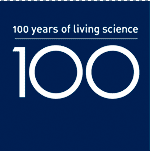Timeline
- 1845 – 1899 |
- 1900 – 1909 |
- 1910 – 1919 |
- 1920 – 1929 |
- 1930 – 1939 |
- 1940 – 1949 |
- 1950 – 1959 |
- 1960 – 1969 |
- 1970 – 1979 |
- 1980 – 1989 |
- 1990 – 1999 |
- 2000 – present
Imperial College 1990 - 1999
World
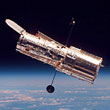 1990 - Hubble space telescope launched
1990 - Hubble space telescope launched
The $2 billion Edwin P. Hubble Space Telescope (HST) was lifted into orbit by the space shuttle Discovery on April 25, 1990. Weighing approximately 25,500 lb (11,000 kg) and measuring 43 ft (13 m) long by 14 ft (4 m) wide, or roughly the size of a school bus, HST is the most complex and sensitive space observatory ever constructed, and it has become astronomers' principal tool for exploring the universe.
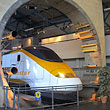 1994 - Channel Tunnel Opens, Connecting Britain and France
1994 - Channel Tunnel Opens, Connecting Britain and France
A 31 mile long rail tunnel beneath the English Channel, the Channel Tunnel connects Folkestone, Kent in England to Coquelles near Calais in northern France. A long-standing and very expensive megaproject that saw several false starts, it was finally completed in 1994. It is the second-longest rail tunnel in the world, with the Seikan Tunnel in Japan being longer, but the undersea section of 24 miles (39 km) is the longest undersea tunnel in the world.
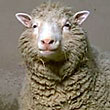 1997 - Scientists clone sheep
1997 - Scientists clone sheep
Dolly, a ewe, was the first mammal to have been successfully cloned. She was cloned at the Roslin Institute in Midlothian, Scotland, and lived there until her death when she was six years old. Her birth was announced on February 22, 1997 and she was originally code named "6LL3".
College
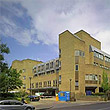 1995 - Merger with the National Heart & Lung Institute at Royal Brompton
1995 - Merger with the National Heart & Lung Institute at Royal Brompton
The National Heart and Lung Institute's merger with Imperial in 1995 makes it one of the founding divisions of what later became the School of Medicine. It now carries out pioneering research on all aspects of heart, lung cardiovascular disease, with increasing emphasis on interdisciplinary work in the areas of biomedicine, biophysics and bioengineering.
The merger of the National Heart and Lung Institute in 1995 with Imperial College marked another step in the development of the Institute from its beginnings in the nineteenth century and subsequent mergers with: The Hospital for Consumption and Diseases of the Chest 1841, later the Brompton Hospital and its sister hospital in the East End, the London Chest Hospital; The National heart Hospital; The Institute of Cardiology; The Brompton Hospital Medical School and the Institute of Diseases of the Chest.
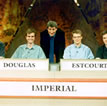 1996 - Imperial wins University Challenge
1996 - Imperial wins University Challenge
During the Jeremy Paxman era of the popular and intellectual UK quiz show University Challenge, Imperial teams have fared well, becoming series champions twice and runners up once. Along with Magdalen College Oxford, Imperial is one of only two institutions to have won more than one series, and is one of only five non-Oxbridge Colleges in the UK to have won at all.
In 1996, captain Mark Pallen (PhD Biochemistry 1997), along with team mates Jim Totty (MSc Physics 1992, PhD 1996), Nick Bradshaw (PhD Electrical Engineering 1996) and Chris Harrison (MSc Computing 1996) stormed to victory, beating LSE in the final 275 to 220.
Five years later, the 2001 team (pictured here) became the second Imperial team to become series champions, defeating St John's College, Oxford, by 250 to 195. The team, captain Gavin Estcourt (MSc Computing 2000), John Douglas (PhD Civil Engineering 2001), Siegfried Hodgson (Computing 2001), and Alexander Campbell (Science Communication 2000) received the trophy from Poet Laureate Andrew Motion.
The following year, the Imperial team again reached the series final, but was beaten in a close match by Somerville College, Oxford. Despite its defeat, the team was sent a bottle of champagne by host Jeremy Paxman, who described its final performance as both catastrophic and courageous.
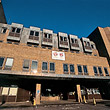 1997 - Imperial College School of Medicine formed
1997 - Imperial College School of Medicine formed
In 1997 the Imperial College School of Medicine was formed, the product of a series of mergers with leading London medical schools. It is now one of Europe's largest medical institutions, with over 1,500 postgraduates in the Graduate School of Life Sciences and Medicine and more than 300 new medical undergraduates admitted each year.
http://www.imperial.ac.uk/P1839.htm
 1998 - Opening of the Sir Alexander Fleming Building by Her Majesty The Queen
1998 - Opening of the Sir Alexander Fleming Building by Her Majesty The Queen
Opened in October 1998 by Her Majesty The Queen, the Sir Alexander Fleming Building provides purpose-build headquarters for the College's medical and biomedical research. Designed by Sir Norman Foster and Partners, it received a Royal Institute of British Architects award in 1999 and includes an installation by Danish artist Per Arnoldi in its atrium.
Watch the opening ceremony in RealPlayer.
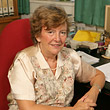 1998 - Academic Opportunities Committee established
1998 - Academic Opportunities Committee established
The Academic Opportunities Committee was established in 1998 as a Rector's Advisory Committee to ensure a 'level playing field' for women academics at Imperial College by removing barriers that may exist in appointment or career advancement, and to ensure that the numbers of such qualified women in the College are as high as possible. The Committee is currently chaired by Professor Dame Julia Higgins.
People
 Professor Brian Davies
Professor Brian Davies
Brian Davies, who first joined Imperial in 1983, became the first Professor of Medical Robotics in 2000.
He conducts ground-breaking research on robotic and computer aided surgery and was involved in developing PROBOT, which in 1991 became the first robot to actively remove tissue from a patient in a clinical setting. The robot carried out a prostate surgery under the direction of a surgeon, cutting back an enlarged prostate gland that was obstructing urine flow.
More recently he was involved in creating a new robot for knee surgery, called ACROBOT, which led him to form the spin-out company Acrobot Co Ltd with Justin Cobb, Professor of Orthopaedics of Imperial.
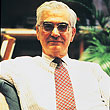 Ernest Ronald Lord Oxburgh (1934)
Ernest Ronald Lord Oxburgh (1934)
Lord Oxburgh was educated at University College Oxford and took his PhD at Princeton University. He has held academic positions at Oxford and Cambridge Universities. He became Head of the Department of Earth Sciences in Cambridge and was President of the Queen’s College. He was Chief Scientific Advisor to the Ministry of Defence between 1988 and 1993 and knighted in 1992.
In 1993 he became Rector of Imperial College and created Imperial College School of Medicine and oversaw the merger with Wye College. He was made a life peer in 1999 as Lord Oxburgh of Liverpool and is active in the House of Lords on Science issues as Chairman of the Select Committee on Science and Technology. He became Chairman of Shell in March 2004.
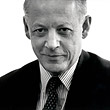 Professor Christopher Edwards (1942)
Professor Christopher Edwards (1942)
Professor Chris Edwards was the first Head of Imperial College School of Medicine from 1995-2001. Educated at Cambridge, Edwards joined St Bartholomew’s Hospital, moving to Edinburgh as Professor of Clinical Medicine in 1980. He became a Governor of the Wellcome Trust in 1994.
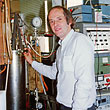 Professor Bill Wakeham
Professor Bill Wakeham
Professor Wakeham came to Imperial in 1971 as a lecturer in the department of chemical engineering and chemical technology. He was promoted to reader in 1979 and to a personal chair in 1985, becoming head of department in 1988. He was appointed pro rector (research) in 1996, combining this role with the position of deputy rector the following year, and pro rector (resources) in 1999.
He left Imperial in 2001 to become Vice-Chancellor of the University of Southampton.
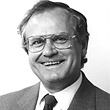 Professor John Burland
Professor John Burland
John Burland, Emeritus Professor of Soil Mechanics (1980-2001), is best known as the engineer who prevented the Leaning Tower of Pisa from toppling over, for which he was awarded the Knight Commander of the Royal Order of Francis I by the Italian government. He was also involved in ensuring that the Houses of Parliament and Big Ben were unharmed by the extension of the London Underground Jubilee Line.
Burland worked also on the construction of a large underground park at the Palace of Westminster and the stabilising of the Metropolitan Cathedral of Mexico City. His team was also involved in the extension of the Jubilee Line and he has advised on many geotechnical aspects of that project, including ensuring the stability of the Big Ben Clock Tower.
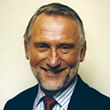 Professor John Lawton
Professor John Lawton
John Lawton joined Imperial in 1989 to establish the Centre for Population Biology at the College's Silwood Campus, acting as director until 1999 when he became chief executive of the Natural Environment Research Council.
Lawton has conducted pioneering research in the population dynamics and biodiversity of birds and insects, with emphasis over the last decade on the impacts of global environmental change on wild plants and animals. He was founder and chairman of The Royal Society for the Protection of Birds.
While at Imperial, he led the creation of Ecotron, a unique research facility consisting of sixteen small environmentally controlled chambers in which ecosystems are exposed to different conditions such assoil, light, water and wind over long periods.
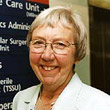 Professor Averil Mansfield
Professor Averil Mansfield
Averil Mansfield joined the Royal Postgraduate Medical School in the 1980s. In 1993 she became the first female professor of surgery in the UK at St Mary's Hospital Medical School, a position she retained until 2004.
She set up the Women in Surgical Training scheme in 1991 in order to encourage more women into surgery. In the past 10 years, the number of women consultant surgeons has almost doubled.
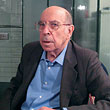 Professor Colin Caro
Professor Colin Caro
Professor Colin Caro was founder and director (1966-1989) of the Physiological Studies Unit at Imperial which was one of the first units worldwide to bring together scholars from different backgrounds (applied mathematicians, engineers, physiologists) to work on what is today called bioengineering. It was from this unit that the Department of Bioengineering later emerged in 1998.
Caro's work on vascular and respiratory flow has been path-breaking and has influenced vascular communities worldwide. Recently he worked on the geometry of arteries, revealing that the arterial system is three-dimensional thereby it generates a swirling fluid flow that prevents the stagnant blood flow which can cause vascular disease.
© 2007 Imperial College London
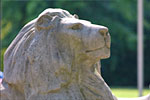
Through the first decade of the twenty-first century the campaign seeks to philanthropically raise £207 million from Imperial’s alumni, staff and friends, and donations from charitable foundations and industry.
Where your support can make a differenceGive now

We’re celebrating 100 years of living science with 100 stories. We’ve collected some of them already, and invite you to share your own stories and memories.

